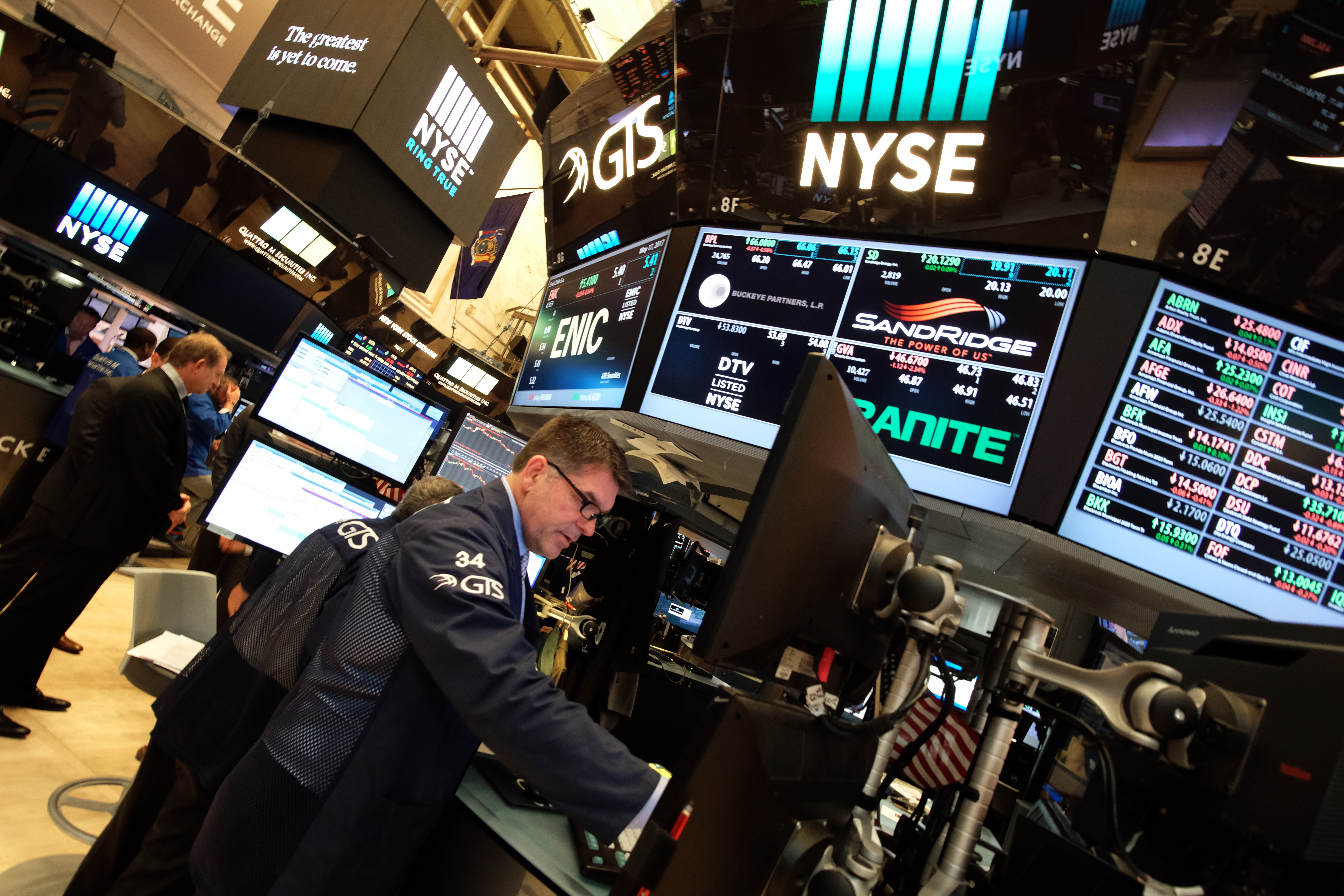Wall Street’s bull run nears new landmark
Traders work on the floor of the New York Stock Exchange (Jewel SAMAD)
New York (AFP) – Bolstered by a period of extraordinary monetary stimulus followed by generous tax cuts, Wall Street stands at the cusp of another landmark this week.
The US stock market on Wednesday will mark 3,453 straight days without suffering a drop of 20 percent. That makes it the longest “bull market” since World War II, according to leading Wall Street statisticians.
“It’s an encouraging milestone because it’s the sign that there is life left in this market,” said Sam Stovall, chief investment strategist at CFRA Research.
The marathon march higher began in March 2009, just after the financial crisis erased more than half the value of the S&P 500, the broad-based US stock index.
When stocks fall at least 20 percent below their previous record, they exit a “bull market” and enter a “bear market.”
Although “bulls” and “bears” are very much in the psyche of Wall Street, there is no official authority on these designations and some experts quibble over the dates.
The current bull market began amid the emergency steps taken by the Federal Reserve, which set ultra-low interest rates and sought to spur investment further with billions of dollars in bond purchases in a program known as “quantitative easing.”
“This bull market started with interest rates lower than any other bull market,” said Stovall. “That helped fuel economic growth as well as earnings increases.”
Wall Street stocks have avoided major declines, even as the Fed has pulled back from these easy-money policies.
Stocks got another shot of support in late 2017 when President Donald Trump and congressional Republicans succeeded in pushing through a tax overhaul that cut the tax rate on corporate profits from 35 percent to 21 percent.
That has led to huge earnings gains. Companies in the S&P 500 have reported a nearly 25 percent jump in second-quarter profits per share compared with the year-ago period, according to FactSet.
– Risks to bull market? –
But how much longer can the bull market run?
“Bull markets don’t die of old age, they die of fright,” said Stovall, who considers a recession the biggest risk to the bull market.
Still, many analysts are still confident the US economy will stay healthy and avoid a downturn for a while longer.
For example, the market still seems to be in wait-and-see mode on a possible slowdown from tariffs, despite multiple actions by Trump against leading trading partners.
“I would be much more concerned if we were going into an earnings recession or if the leading economic indicators were slowing down. Then you can think about the end of the cycle,” said Art Hogan, chief market strategist at B. Riley FBR.
“I am not concerned about the length” of the bull market, he added.
Key risks to the bull market include the Fed, which is midway through a cycle of interest rate hikes that analysts worry could ultimately lift borrowing rates to a troublesome level. One fear is that a sudden spike inflation prompts the Fed to accelerate its interest rate hikes, disrupting the global economy.
But even after a series of rate hikes, US interest rates are still only in the range of 1.75-2.0 percent. Stovall believes rates would need to get to at least 1.5 percent above inflation — around 4.0 percent — to derail stocks.
High stock valuations are another worry. Today, the ratio of stock value to corporate earnings is relatively high by historical standards and in the same ballpark as in 2007 before the crisis.
But that ratio is well below the level before the late-1990s Internet bubble burst.
Stock values “look pretty healthy, healthier than they looked at the beginning of the year,” FTN Financial Chief Economist Chris Low told AFP.
Low notes that corporate profits have risen following tax cuts, saying, “this year’s gains slowed down even though earnings have been terrific.”
Disclaimer: This story has not been edited by Siliconeer and is published from a syndicated feed. Siliconeer does not assume any liability for the above story. Validity of the above story is for 7 Days from original date of publishing. Content copyright AFP.


